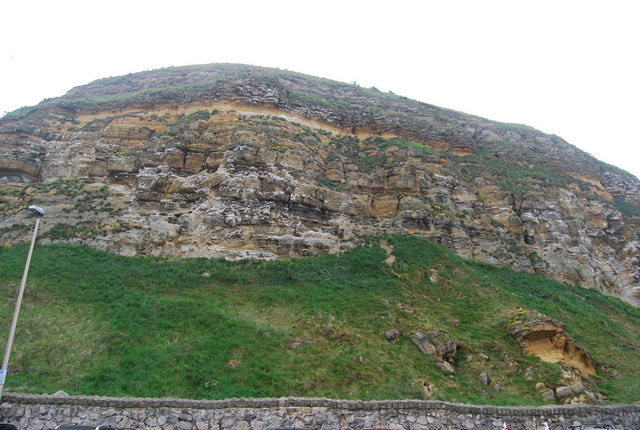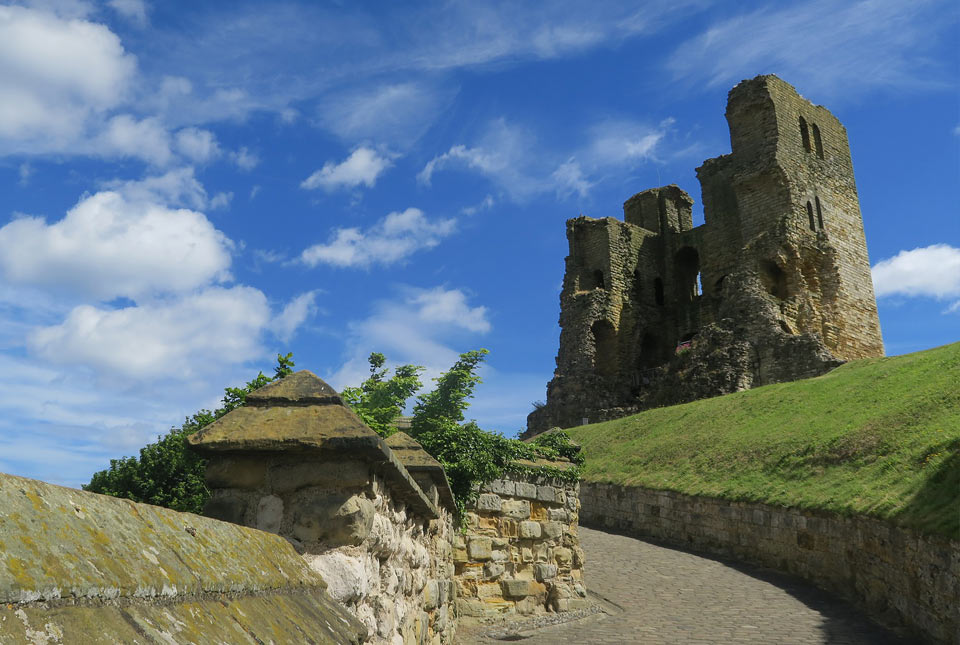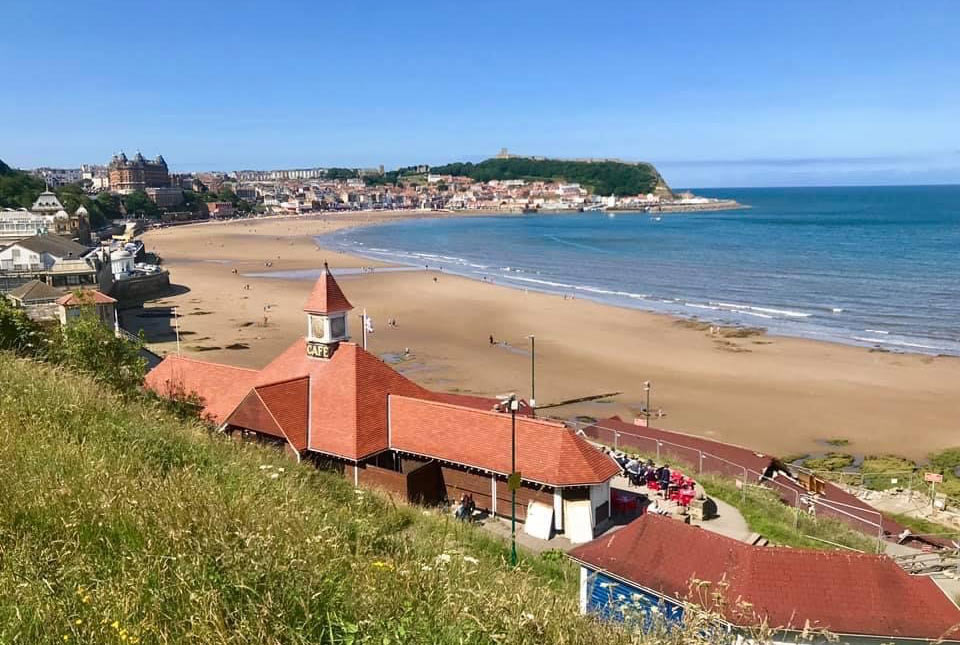One of the first things you notice about Scarborough is that there are rocks everywhere. Perhaps the most obvious example is the Scarborough Castle headland. The headland is a downfaulted (to the east) outlier of Middle and Late Jurassic rocks and, due to its hardness, it forms a promontory separating the South Bay from North Bay areas. Relatively hard, honey-coloured, calcareous sandstone (the Corallian Group) sits on the soft Oxford Clay Formation; the break in slope and junction between the two can be seen around the headland.
The North and South bays either side are composed of much softer rocks. The Jurassic rocks (around 170 million years old; formed during the time of the dinosaurs) formed from great river channels and swamps on top of dark-coloured shales from a deep ocean.
Marine Drive skirts around the headland, with imposing cliffs that made the headland a natural location for a Roman signal station and later a fortified castle. The massive great tower was built in the 12th century by King Henry II. Around Marine Drive you can see many sea birds nesting on the cliffs, including kittiwakes and peregrine falcons if you are lucky.

Middle and Late Jurassic rocks on Scarborough Castle headland. © N Chadwick, CC BY-SA 2.0, via Wikimedia Commons.
Marine Drive was an ambitious engineering feat that was constructed as the first-ever marine carriage drive in the country that also served as a sea defence. Starting in 1897, it took 11 years to complete and was opened as a toll road in 1908. The toll house still stands at the south entrance to the drive. Marine Drive merges into the older Royal Albert Drive to the north-east (completed in 1890). Walking along the drive, you will see Hairy Bob’s Cave (a local curiosity which resembles a ‘cave man’s’ dwelling), a skate park and access to Royal Albert Gardens, which will take you up to the castle and old town.
At the northern end of the drive, there is a larger-than-life statue sat on a bench admiring the sea views. The statue, entitled Freddie Gilroy and the Belsen Stragglers, depicts Freddie Gilroy, a former soldier who participated in the liberation of Bergen-Belsen concentration camp, sitting on a bench in his old age.

The ruins on Scarborough Castle Headland. © AdamHillTravel/Pixabay.
At the northern end of the drive there is Peasholm Park and North Bay Heritage Railway. Peasholm Park is a ‘Far Eastern themed’ municipal park, which was opened in 1912 for galas, displays and exhibitions. The park was extended to include Peasholm Glen, a natural shady ravine with many varieties of trees. The park has a boating lake, a putting green and tree walk.
Getting there
Pay and Display parking is plentiful along the drive (9am – 6pm) and is free from 31st October to 1st March.
Interested in the geology of Scarborough? Visit the Rotunda Museum (YO11 2NN), one of the oldest geology museums still in use in the UK. The building, constructed in 1829, houses a collection of Jurassic geology from the Yorkshire coast.
About the author

Prof Melanie Leng
BGS Chief Scientist, environmental change, adaptation and resilience
You may also be interested in

Postcard geology
Find out more about sites of geological interest around the UK, as described by BGS staff.



